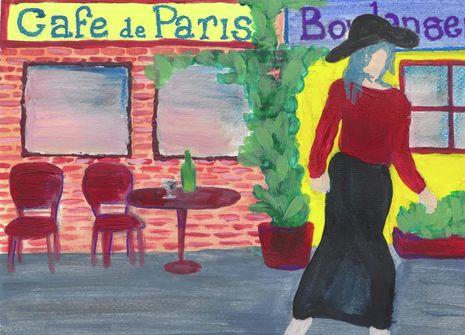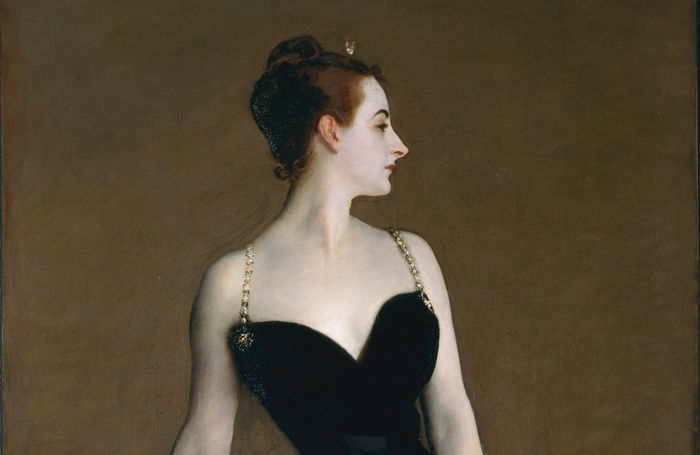Parisienne: the evolving exclusivity of French femininity
Beatrice Taggart explores femininity in France through the label Parisienne, addressing the term’s shift in inclusivity

The Parisienne (Parisian woman) has recently become the celebrated, modern ideal of French elegance. When I search for its hashtag on Instagram, an abundance of posts (four million to be precise) crop up depicting “that clichéd French girl”. She sits outside cafés and restaurants all day; she drinks red wine and smokes, while maintaining the perfect slim physique. This modern embodiment of femininity was solidified in the early 2000s with the book French Women Don’t Get Fat (2004) by Mireille Guiliano, who – under the guise of her secret, “delicious”, weight-loss recipe of leeks and water – implies that French women can (and should) stay thin forever. This model of femininity has become remarkably popular in modern culture, yet it excludes so many women from the national narrative. Should we not be celebrating all the different lives of women rather than privileging a tiny minority?
The ideological meaning of the term Parisienne seems to have originated during the Second World War in France. Women, especially those who lived in the French capital, endured an oppressive, virile world for many years, which was dominated by the German Occupation. Womanhood played an important role for these women in the fight against the patriarchal rule to which they were subjected. Whether they were resisters or collaborators, those who tried to maintain a semblance of normality and protected their culture by using their femininity were often referred to as Parisiennes. The concept of femininity was at that time far more inclusive; it did not force women to conform to one type of lifestyle or identity.
Coco Chanel – an infamous collaborator, who set up camp in the Hotel Ritz with her German diplomat lover, Baron Hans Günther von Dincklage – and the leader of the French Resistance network “Alliance”, Madame Marie-Madeleine Fourcade, are both great examples of women who used their French femininity and status as a Parisienne to their advantage. Chanel revolutionised and liberated women’s clothing during the war so that women were not restricted to domestic roles. Her advancement of the culotte, which today remains highly-fashionable, enabled women to use bikes freely, while still looking respectable. Fourcade used her innate femininity to go under the searching eyes of the Gestapo. No one, not even the Nazis, suspected a woman of being the head of one of the highest level spy networks in the whole of Europe, as Gabriel Rivière once acknowledged: “Good God, a woman!”
“We need to understand that idealisation of a dream cannot, in most cases, create happiness, as for the majority the end result is just unattainable.”
Madame Sandrine touches upon the inclusivity and importance of French femininity during the war in an interview: “Women during the Occupation started to find their freedom. Whether they moved towards the Occupier or towards the Resistance, they started to say, I am doing that, I like it. Whereas before they had been made to be much more submissive by society, the Occupation created a world where women could choose for themselves how they wanted to live their lives.” Yet in the modern interpretation of French femininity, encompassed by the label Parisienne, I find it almost impossible to see the same level of inclusivity. In today’s society, only one type of Parisienne exists, which women have begun to idealise.
Having recently moved to France myself for my Year Abroad, I have been asked numerous times whether I smoke. Women seem to be so shocked when I reply, “not at all”; one acquaintance even stated, “It’s strange, none of the English assistants [all female] smoke.” It was as if the expectation was already there: that I, like them, would smoke with a coffee in hand throughout the day. On some level I felt excluded by not partaking in these activities. In France, women such as Guiliano and the authors of How to Be a Parisian Wherever You Are have solidified the modern exclusivity of femininity. Their lifestyle recommendations, like chicken braised in champagne as a meal “on a workday when pressed for time” (French Women Don’t Get Fat, Guiliano), are ridiculous, but are the essence of what many women believe to be a Parisienne.
Surely, we need to reverse this evolving exclusivity of French femininity? How are women still being excluded from the feminine narrative when we believe this society to be more inclusive compared to those of the past? Just as during the Occupation, femininity should celebrate the lives of all women, free from presumptions about where they live and how they live – including their age, religion, race, physical appearance and eating habits, among many. We need to understand that idealisation of a dream cannot, in most cases, create happiness, as for the majority the end result is just unattainable. In a world where women are already held to such high standards, a recognition of femininity in the different lives of all women would open up a wealth of empowering opportunities, rather than privileging such a small minority. The Parisiennes of the Second World War are the true example of an inclusive womanhood, without expectation or idealisation; a return to this notion would certainly give voice and freedom to so many of those who feel restricted by societal ideals.
 News / News in Brief: Postgrad accom, prestigious prizes, and public support for policies11 January 2026
News / News in Brief: Postgrad accom, prestigious prizes, and public support for policies11 January 2026 Comment / Will the town and gown divide ever truly be resolved?12 January 2026
Comment / Will the town and gown divide ever truly be resolved?12 January 2026 Comment / Plastic pubs: the problem with Cambridge alehouses 5 January 2026
Comment / Plastic pubs: the problem with Cambridge alehouses 5 January 2026 Lifestyle / The only party girl in the East Midlands12 January 2026
Lifestyle / The only party girl in the East Midlands12 January 2026 Features / How sweet is the en-suite deal?13 January 2026
Features / How sweet is the en-suite deal?13 January 2026









